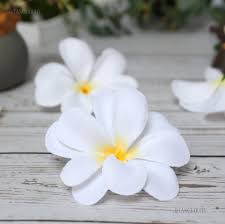
The discovery of porcelain flowers, also known as Hoya plants, is a tale that intertwines botany, exploration, and the curiosity of early naturalists. This captivating narrative sheds light on the journey of uncovering these exquisite blooms and the botanical wonders they represent.
1. **Botanical Expeditions**: The story begins with intrepid botanical expeditions undertaken by pioneering explorers and naturalists in search of undiscovered plant species in remote regions of the world. These daring adventurers embarked on perilous journeys to uncharted territories, braving rugged terrain, dense jungles, and inhospitable climates in their quest to document and collect botanical specimens for scientific study.
2. **Encounter with Exotic Flora**: During their expeditions, botanists and collectors encountered a diverse array of exotic flora, including the enchanting porcelain flowers. Nestled amidst lush forests, rocky cliffs, and tropical landscapes, these delicate blooms captivated the imaginations of early explorers with their intricate forms, vibrant colors, and elusive beauty. Inspired by their discoveries, naturalists meticulously documented the morphology, habitat, and ecological characteristics of porcelain flowers, laying the groundwork for further research and exploration.
3. **Taxonomic Classification**: The systematic study and taxonomic classification of porcelain flowers were pioneered by botanists and taxonomists who meticulously analyzed botanical specimens collected from different regions of the world. Through careful observation, comparative analysis, and botanical illustration, scientists identified unique morphological features and reproductive structures that distinguished porcelain flowers from other plant species. Taxonomic studies led to the formal classification of porcelain flowers within the genus Hoya, named in honor of the 18th-century botanist Thomas Hoy.
4. **Cultural Significance**: As porcelain flowers gained recognition within the scientific community, they also captured the imagination of horticultural enthusiasts, gardeners, and botanical collectors who appreciated their ornamental value and cultural significance. Porcelain flowers became prized specimens in botanical gardens, conservatories, and private collections, where they were cultivated and admired for their beauty, resilience, and adaptability to diverse growing conditions.
5. **Continued Exploration and Discovery**: The discovery story of porcelain flowers is an ongoing narrative characterized by continued exploration, discovery, and appreciation for these botanical treasures. In recent years, advances in botanical research, genetic analysis, and botanical exploration have led to the discovery of new species, hybrids, and cultivars of porcelain flowers, expanding our understanding of their diversity, distribution, and ecological importance.
In summary, the discovery of porcelain flowers is a testament to the curiosity, perseverance, and passion of early naturalists and explorers who ventured into the unknown in search of botanical marvels. Through their encounters with exotic flora, taxonomic studies, and cultural appreciation, porcelain flowers have emerged as beloved symbols of botanical beauty and wonder, inspiring admiration and fascination among plant enthusiasts and nature lovers worldwide.
**The Journey of Exploration and Revelation Continues**
The discovery of porcelain flowers, or Hoya plants, is not merely a historical event but an ongoing journey of exploration, revelation, and botanical fascination:
1. **Advancements in Botanical Science**: Modern advancements in botanical science, including molecular genetics, microscopy, and bioinformatics, have revolutionized our understanding of porcelain flowers and their evolutionary history. Through cutting-edge research techniques and interdisciplinary collaborations, scientists continue to unravel the genetic code, phylogenetic relationships, and ecological adaptations of porcelain flowers, shedding new light on their biological diversity and ecological significance.
2. **Exploration of Biodiversity Hotspots**: Botanical explorers and conservationists continue to explore biodiversity hotspots and remote wilderness areas where porcelain flowers thrive. Expeditions to tropical rainforests, mountainous regions, and island ecosystems uncover new species, rare hybrids, and unique populations of porcelain flowers, contributing to our knowledge of their distribution, habitat requirements, and conservation status.
3. **Conservation Challenges and Efforts**: Despite their cultural and ecological importance, porcelain flowers face numerous conservation challenges, including habitat loss, deforestation, climate change, and illegal trade. Conservation organizations, botanical gardens, and government agencies are working together to address these threats through habitat restoration, protected area management, species conservation programs, and public awareness campaigns aimed at promoting the conservation of porcelain flowers and their natural habitats.
4. **Cultivation and Horticultural Innovation**: The cultivation of porcelain flowers has become increasingly popular among horticulturists, gardening enthusiasts, and botanical collectors who appreciate their ornamental value and resilience. Horticultural innovation has led to the development of new cultivars, propagation techniques, and cultivation practices that enhance the beauty and diversity of porcelain flowers in gardens, greenhouses, and indoor spaces. By sharing their passion for porcelain flowers through horticultural exhibitions, plant sales, and educational programs, enthusiasts inspire others to appreciate and conserve these botanical treasures.
5. **Cultural Reverence and Artistic Inspiration**: Porcelain flowers continue to inspire artists, designers, and cultural practitioners who draw upon their beauty and symbolism in creative endeavors. From botanical illustration and floral design to fashion, jewelry, and interior decoration, porcelain flowers serve as muse and motif for artistic expression, cultural heritage, and aesthetic innovation. Through exhibitions, workshops, and collaborative projects, artists and cultural institutions celebrate the enduring allure and cultural significance of porcelain flowers, fostering a deeper appreciation for their beauty and botanical heritage.
In summary, the discovery story of porcelain flowers is a dynamic and evolving narrative that reflects humanity’s enduring fascination with the natural world and our ongoing quest to understand, appreciate, and conserve its wonders. As we continue to explore, study, and celebrate porcelain flowers, we honor their legacy as symbols of botanical beauty, cultural heritage, and ecological resilience, inspiring future generations to cherish and protect the rich tapestry of life on Earth.